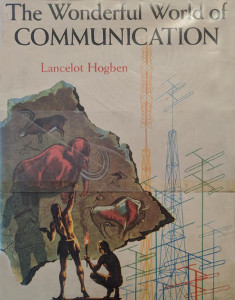The Wonderful World of Communication

Author:
Lancelot Hogben
Publication:
1959 by Doubleday & Company, Inc
Genre:
Non-fiction
Series:
The Wonderful World
Current state:
Basic information has been added for this book.
It is under consideration and will be updated when it is evaluated further.
Book Guide
Search for this book used on:
Today man has the means to communicate instantaneously with his fellow man in any part of the globe. His words can cross oceans and continents in less time than it takes sound waves to cross a biggish room. And yet he will still fail to put a global message across, because most of his hearers do not understand the language he speaks.
His story begins some 25,000 years ago, when the cave artists took the first step toward the power to communicate beyond the range of the human voice and beyond the grave.
In this book, Mr. Hogben shows how, in China, simple pictures gradually developed into meaning-signs and how the illiterate Japanese took over these signs and used them to represent the sounds of their own syllables. We see the emergence of that great Semitic invention, the alphabet, and how, in its various forms, it was spread by the missionaries of the world's greatest religions.
The story then moves to Europe, where we see how, with the rise of printing, literacy slowly became the birthright of the many, instead of the privilege of the few.
We trace, one by one, the development of the camera and the film, the telegraph and telephone, radio and television, and see how each has influenced man's power to communicate his thoughts.
Finally we turn to the burning question of our day, a question which is underlined by the maps of the great language families with which the last chapter begins. Will it ever be possible for man to make himself understood everywhere on the face of our planet? Having explored the possibilities of translating machines and of artificial languages, Professor Hogben suggests and answer which may well prove the most practical of all.
Mr. Hogben's simple, sparkling text is accompanied by a wealth of original full-color illustrations drawn from museums and galleries throughout the world. The result is a book not only of international significance but also one of real beauty.
From the dust jacket
To view an example page please sign in.
Find This Book
Search for this book used on:


